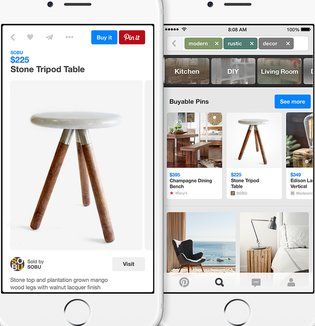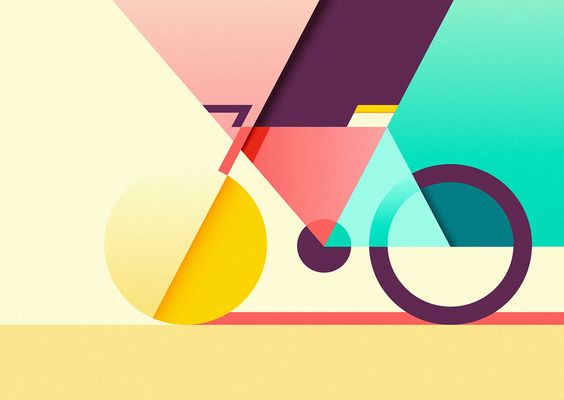Whether you follow trends or avoid them like the plague, trends are an integral aspect of the graphic design, web design, and social media communities.
Keeping up to date on trends are important because they inform a company or designer what potential clients or customers might be looking for. It’s a way of understanding where your biggest target audience may be and what they might be drawn to. On the flip side, understanding trends can also be useful in helping your business stand out by knowing which elements already saturate the market and knowing to avoid them, or by creating a new take on an already popular idea.
Trends take time to gain popularity, slowly becoming more and more widespread. They will eventually reach a peak, whether it is months, years or decades long, gradually fading out over time as they are replaced by new trends. (Source: Design School)
Bright, bold colors, geometric shapes, and abstract designs are popular, according to Janie Kliever at Design School and also Kate England at Creative Market.

Creative use of typography is another trend we have seen gaining popularity, and particularly in 2016. Type is not simply just type anymore. By using the principles and elements of design with type, words are becoming multifunctional design tools.

Design by Anne Jordan and Mitch Goldstein
Design trends that affect a website or app’s functionality are also important. Maintaining a look that is fresh and relevant as well as user-friendly is essential in promoting traffic and sales. If a website is difficult to use or seems outdated, people are less likely spend time on it or come back to it.
With most internet users now connecting via mobile devices, the use of scrolling as a design feature has become commonplace on many websites. Reducing clicks allows content to be viewed faster and to promote better navigation. (Source: Webflow)
Many people look to social media as avenues for inspiration and as a way to share favorites with others. After first appearing on Pinterest, Buy Buttons are becoming more common for companies trying to market through social media. Instead of a potential customer having to hunt down the website and the product, these buttons remove those unnecessary steps and allow for faster conversion. (Source: Forbes)

Live streaming is continuously getting better, and with platforms such as Periscope and Meerkat, users can connect with the world via live video. Real-time engagement is becoming important to users as it makes the experience feel more personal and inviting. (Source: SproutSocial)
I personally am influenced by design that is more eclectic and less trendy. When I feel that a certain element or design has become too mainstream, it becomes less appealing for me. That is not to say that I don’t like anything that is current or trendy, but simply that I am drawn to products and design that have a strong emphasis on quality and longevity, rather than popularity. Colors, shapes, and patterns are easily imitated, but good, conscious design, however, is not. When a lot of care and attention has been put into a design or a site, I am instantly drawn to it. When it is obvious that a person or a company is just trying to capture a sale, or creating something simply for the sake of appealing to the masses, I am not likely to be interested.
So whether you are someone who enjoys staying up to date with the latest trends, or you cringe at the mere mention of the word, it helps to know what everyone else is doing. Even if it is simply to understand what it is that you want to avoid. As Robin Williams, author of The Non-Designer’s Design Book, says, “Once you can name something, you’re conscious of it. You have power over it. You’re in control. You own it.”
